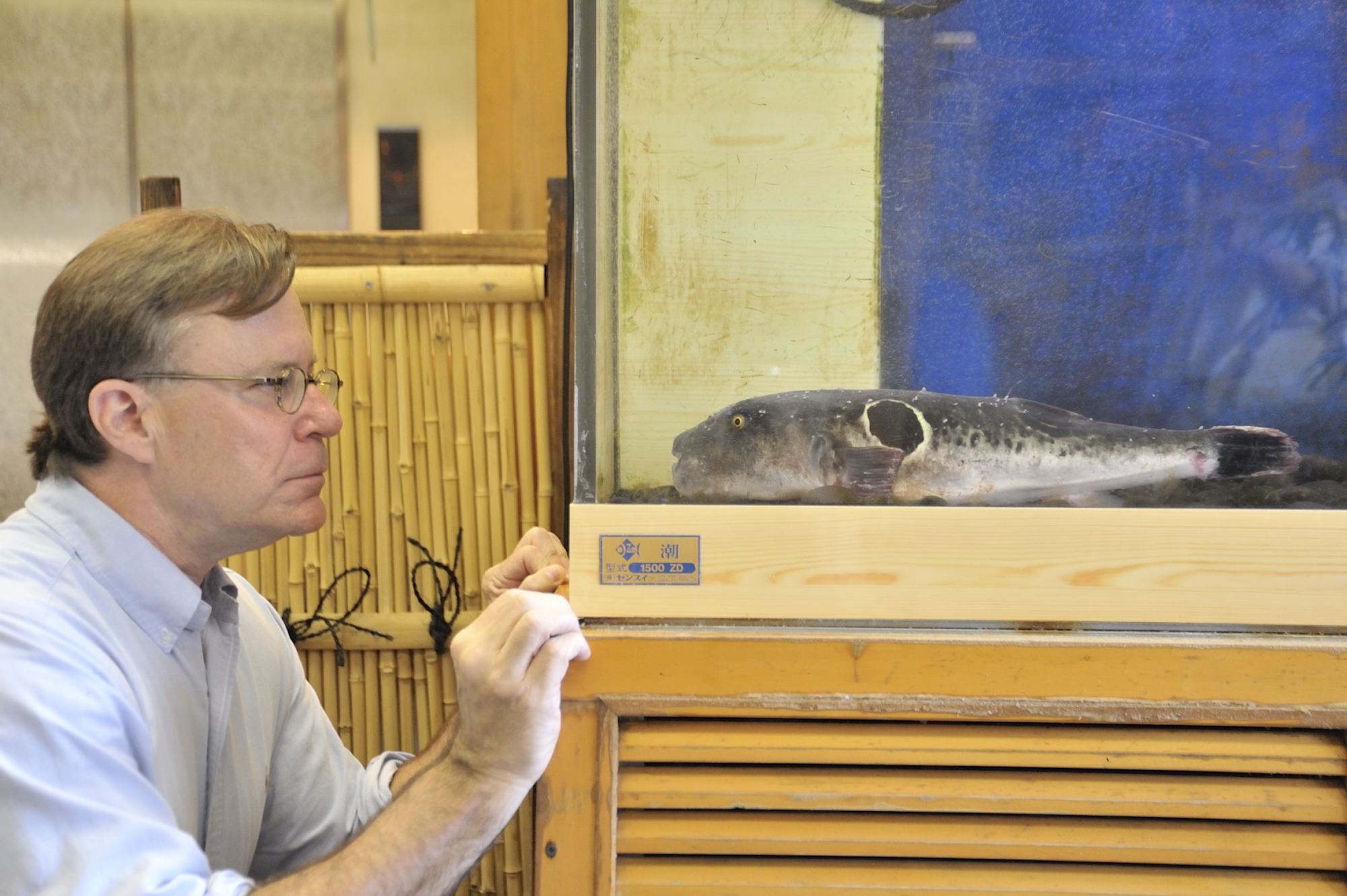
Photo courtesy of Jim Clash.
As an American adventurer born in Tokyo, it occurred to me more than once that I should try the Japanese delicacy blowfish (fugu). When I was young (I moved to the U.S. when I was four) I had heard my parents discuss fugu many times. But it was always in hushed tones: "Did you hear so-and-so died from a blowfish dinner last week?" So, for me, fugu took on ominous proportions early.
If blowfish is not prepared correctly, diners can fall ill, even die from poison contained in the fish's internal organs. The ovaries, liver and intestines contain tetrodotoxin, which can produce rapid death starting with numbness of the lips and ending in total paralysis.
In Japan, fugu preparation is strictly monitored by the government. Chefs apprentice under a master for at least three years, then pass a number of stringent tests. Only then are they eligible for the required license.
But it wasn't always that way. In 1958 alone, there were 176 fugu deaths in Japan. The most famous fatality occurred in 1975, when Kabuki actor Mitsugora Bando VIII fell ill after four bowls of Chiri he had consumed in Kyoto (the broth contains pieces of the liver, which he had persuaded chefs to serve him clandestinely).
Everyone has his or her own definition of adventure. I am comfortable driving a car at 200 mph, climbing a 23,000-foot peak and flying at twice the speed of sound in a Russian MiG fighter jet. But ridiculous little things, like shopping for clothes or trying new foods, frighten me. Eating fish raw, a dish I don't even like cooked, is particularly disturbing and an experience I have avoided all of my life.
What better tongue-in-cheek adventure, I thought, than to try fugu -- something that has some risk but also something I am afraid of because of taste?
For my culinary adventure, it was decided that Japan would be the appropriate place. First I would visit Tsukiji, the famous Tokyo fish market, where early each morning restaurant owners and chefs congregate to browse among, perhaps, the widest selection of exotic fish in the world.
By the time I arrived, at 11:30 a.m., the main bidding action was over, but I did get to stroll along and see some unusual looking ocean dwellers. None really appealed to me, but shop owners, with their wide smiles, enthusiastically encouraged me to try. I sampled a few and politely tried to smile back -- but for me it wasn't really a pleasant experience.
My big adventure occurred at a restaurant specializing in fugu of all types, shapes and textures. At the entrance I encountered a live, stocky blowfish in a water tank. I found the thing odd-looking but also quite stately. No matter how hard I tried to distract it with funny faces, it just stared ahead ominously. Via a translator, I asked if this fellow were to be my lunch, but the waitress laughed. It was just for show, I was told; the real stuff was being prepared in the kitchen.
First came a drink of hot saki with the fin of fugu. I assumed this would be easy to consume, as any fish taste likely would be dwarfed by the potent Japanese beverage. And it was. I smiled, having completed phase one successfully!
Next came a steaming dish of fugu tempura. I, of course, have eaten chicken and vegetable tempura so know that the outside breading would dull the taste of the inside -- plus the thing was cooked! I picked up a piece with my chopsticks, took a small bite and swallowed. Again, this was just fine -- no taste of fish, just bread! I was still grinning -- and still alive!
But my real test was the uncooked sashimi fugu. In front of me was placed a beautiful dish in the shape of a chrysanthemum, the traditional Japanese funeral flower. I joked that it was so pretty, maybe I should leave it undisturbed. My hosts laughed.
Suddenly I was Anthony Bourdain of No Reservations. I closed my eyes, put a slice on my tongue and chewed gingerly. The texture was stringy, with a slight crunch akin to an al dente vegetable like celery. But surprisingly, it was tasteless. My Japanese friends waited for a reaction. I didn't really have one, other than relief. Just like that, the adventure was over!
Would I try fugu again? Probably not. I just don't like fish. But I do feel happy for having had the experience. When the topic of blowfish comes up in conversation, I can wear my story proudly: "I ate blowfish and survived." In the U.S., clueless people might think that's a big deal. But in Japan, of course, they will just laugh.
